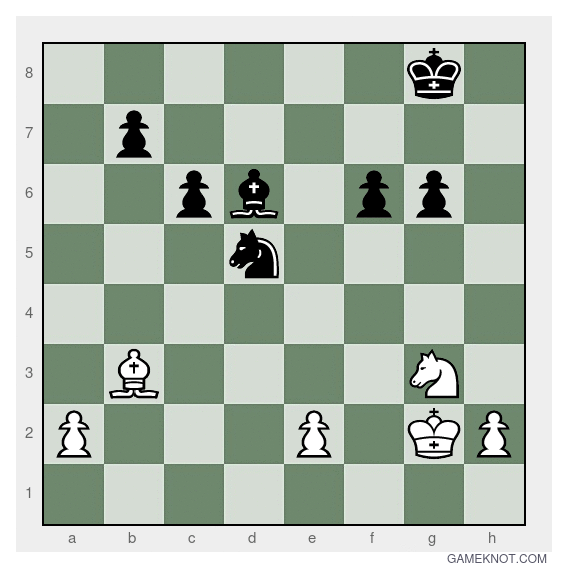
This is the second of a series of short chess problem training videos. Here is the problem:
Black to move…

February 12, 2021

This is the second of a series of short chess problem training videos. Here is the problem:

February 9, 2021

This is the first in a series of short videos that I’ve started making for a group of Japanese college students who are studying English, and who, with some prompting from me, have recently taken up chess. The students all started as complete beginners. Most of them also have no experience of playing Shogi, or Japanese chess. So chess is something completely new for them.
A couple of weeks ago we decided to start a line group to discuss chess. I post a problem to the group once every few days, and then a day or two later I post a video that goes through the problem in what I hope is an easy–to-understand way.
The videos are all less than five minutes long, and each one focuses on just one problem. That makes these videos ideal material for “Easy Chess Tips”!
Each video looks at just one chess problem and explains why the solution is the best (or only) option.
Here’s Problem 1, Taken from 100 Chess problems for the Rest of Us, by T. E. Klemm. It is White to move.
So the question is, what is White’s best move?

January 16, 2021

Here is the second set of ten variations (11-20) of my 184 variation 1.d4 opening repertoire mnemonic memory system.
The variations are in the Queen’s Gambit Declined and the Queen’s Gambit Accepted. The QGD section includes these variations:
January 16, 2021

When you have an imbalance of two Bishops against two Knights, the player with the two Bishops should seek to open up the game to create diagonals for his Bishops.
On the other hand, the player with the Knights should seek to keep the game closed and activate his Knights while limiting the range of his opponents Bishops.
In a recent online game my opponent did not make good use of his two knights, so even though my play was not optimal, I was able to win by taking advantage of the minor piece imbalance and seeking to utilize my Bishop pair.
Continue ReadingJanuary 4, 2021

This is perhaps not such an “easy chess tip” because it takes time, effort and imagination to master, rather like chess itself. Nevertheless, memory training, especially for opening variations in a chess repertoire, is worth considering if you want to avoid losing control when your opponent pulls some unexpected move early on.
I have created opening repertoire memory systems for both white, playing 1.d4, and black, playing 1… d6.
In this demo video I attempt to go through the first ten variations of the my white opening reportoire, which is based on John Watson’s book, A Strategic Chess Opening Repertoire for White. Watson’s book has been my guide to the Queen’s pawn opening for the last few years.
Continue Reading